
Sidenor, Basque country to develop renewable energy project
Special steelmaker Sidenor has signed a partnership agreement with Basque agency EVE to develop a renewable energy project, the Spanish northern regional government tells Kallanish.
The sides created a joint venture company Eguzkind, which will build eight photovoltaic solar plants in Lleida, Tarragona and Barcelona. These will have total power of 43 megawatts.
“The construction of these plants, which will involve an investment of €40 million ($43.8m), is already under development and will begin to supply energy to Sidenor in the last quarter of this year,” EVE says. “The operation of the eight photovoltaic solar plants will make it possible to advance in the decarbonisation of Basque industry and guarantee Sidenor’s electricity supply.”
The steelmaker will purchase the energy through a long-term contract. “The Eguzkind project is an important step for us to become an active part in the generation of renewable energy while reducing CO2 emission in our processes and moving towards the production of green steel,” Sidenor explains.
Todor Kirkov Bulgaria


Outokumpu completes longs divestment to Cogne
Outokumpu has completed the divestment of the remaining Long Products business in Degerfors and Storfors to Cogne Acciai Speciali.
The sale was originally announced at the beginning of April (see Kallanish 1 April). It trailed the divestment of the majority of the Long Products business to Marcegaglia at the beginning of the year.
The enterprise value of the latest transaction is €12 million ($13m) and it has a positive cash impact for Outokumpu. The company will book a loss of approximately €30m for the third quarter.
Outokumpu has therefore exited production of long products for good, and is now focused fully on its core business, stainless steel flat products and ferrochrome. The plate operations in Degerfors are not affected by the divestment, Outokumpu notes.
Cogne Acciai Speciali is now part of Taiwan’s Walsin Lihwa, which is investing over €110m in Cogne’s Aosta plant between 2022-2024. The growth strategy involves gaining market share in Europe and Asia, and developing the group’s presence in the US. Cogne intends to boost output by adding shifts and hiring more workers.
Christian Koehl Germany , Natalia Capra France

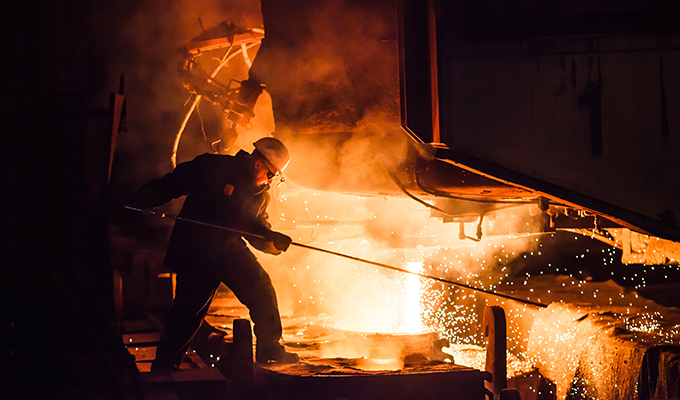
Steel decarbonisation requires G20 dialogue, cooperation: IRENA
Dialogue and co-operation in the G20 will be critical to ensuring access to the resources required to decarbonise the steel industry on a global scale, says a new report from the International Renewable Energy Agency (IRENA) in collaboration with India’s Ministry of Environment, Forest and Climate Change.
The role of steel recycling will continue to grow over time as more scrap becomes available in emerging economies, resulting in larger shares of recycled steel, in turn progressively reducing the need for primary production. By 2050, about half of the world’s steel production could come from recycled scrap, according to the report seen by Kallanish.
“National governments can make a difference by adopting and enforcing regulations that ensure environmentally sound and thorough steel scrap collection and sorting processes,” the report states. “Adopting such good practices in the recovery of end-of-life steel products is also crucial to minimise scrap’s contamination by other materials, for example, copper, thereby enabling the use of scrap as input for higher-quality steel specifications.”
“Dialogue and co-operation in the G20 can contribute towards removing the barriers to international scrap trade, allowing scrap to be transported and used where it creates the most economic and environmental value,” it adds.
G20 members can also facilitate the exchange of best practices among national policymakers and regulators. This could focus on preventing market distortions that disincentivise investments in energy efficiency projects. Implementing best practices can make the industry more competitive and provide sufficient incentives to invest in improving efficiency in domestic steel industries.
When it comes to hydrogen use, regions with low-cost, abundant and high-quality renewable energy and iron ore resources are in the best position to make hydrogen-based iron ore reduction competitive, the report continues.
This creates an opportunity for international co-operation. Iron ore exporters with competitive captive renewables supply could capture more value by exporting processed iron. Importing countries could reduce the overall costs of decarbonising their domestic industries while retaining steel production within their borders, the report observes.
A transition towards renewables-based steel will require decisive policy support in the early stages of technology adoption. Policy action at the national level can help create the conditions for investment but since steel is an internationally traded commodity, multilateral co-ordination will be vital.
The report recommends G20 members co-operate in several areas to accelerate a transition towards renewables-based steel. These include dialogue towards internationally agreed definitions, standards and certifications for low-carbon steel; initial demand creation through multilateral public procurement commitments; and knowledge exchange on technology research and development. Further areas are professional skills needed for the transition; and technical and financial assistance to developing countries, among others.
Adam Smith Poland

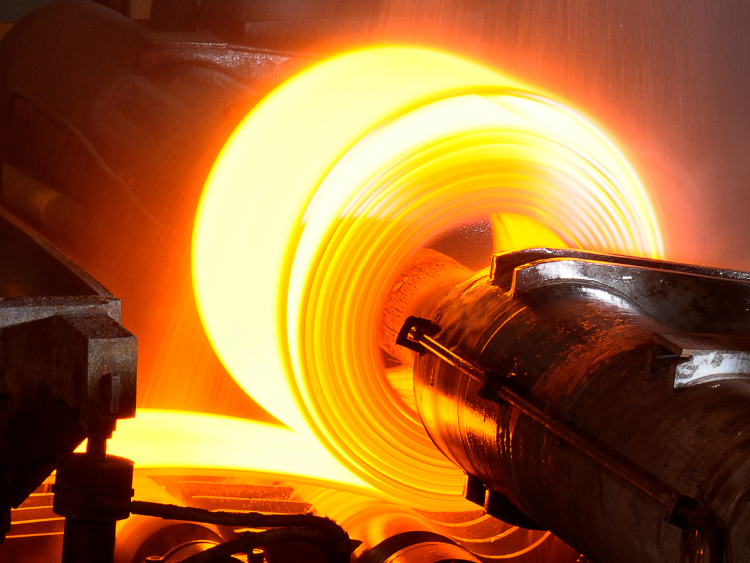
Trading on pause in European HRC market due to seasonality, mills hope to achieve higher prices in September
The seasonal demand slowdown has almost brought trading to a halt in both Northern Europe and Italy.
Fastmarkets’ daily steel HRC index, domestic, exw Northern Europe, was calculated at €650.00 ($715.94) per tonne on August 1, down by €4.92 per tonne from €654.92 per tonne on July 31.
The latest calculation of the Northern European index was down by €6.88 per tonne week on week and by €24.10 per tonne month on month.
As was seen the week before, few suppliers were active in the market.
One German producer was running at reduced rates and therefore had significant delays in order deliveries, with target prices for November-rolling HRC heard at €700 per tonne ex-works – although this was considered unworkable by buyer sources.
In fact, buyers’ estimates of tradeable values were heard at no more than €640-650 per tonne ex-works.
One major integrated producer in the region was heard offering September-delivery HRC at €660 per tonne ex-works.
European mills were optimistic about the post-summer market outlook, expecting apparent steel demand to revive.
“We have not seen any restocking in July, [although] buyers would [normally] come back for volumes,” a mill source said.
Another supportive factor in the European markets was the fast take-up of HRC safeguard quotas in the “other countries” category, which would exclude the most competitive suppliers.
As of July 28, 100% of the total quarterly allocation of 933,743 tonnes in the “other countries” category, for the period from July 1 until September 30, had been taken up, according to EU customs statistics.
Vietnam, Japan, Taiwan and Egypt were the major HRC suppliers to the EU under the “other countries” category, with Asian suppliers offering the most competitive prices, according to EU market sources.
The other HRC suppliers with individual country quotas to the EU are Turkey, India, South Korea, Serbia and the UK.
Among these, Turkey, India, Serbia and the UK have been using their allocations at quite a slow pace, and the prices offered from those countries were quite close to the EU market levels, industry sources said.
Notably, a source in the Benelux area reported an HRC offer from Turkey to Europe at €620-630 per tonne CFR to Antwerp, excluding anti-dumping duty.
At the same time, market sources held little hope of a real consumption rebound in September.
“Construction remains the worst, and automotive the best [performing end-user sectors], but only because the [car industry] is not declining – it remains rather stable,” a distributor in Europe said. “I wouldn’t expect massive price gains [for HRC] in September, but restocking and import issues might allow for a price rise of €15-20 per tonne.”
Fastmarkets calculated its daily steel HRC index, domestic, exw Italy, at €637.50 per tonne on August 1, up by €2.50 per tonne from €635.00 per tonne on July 31.
The Italian index was down by €2.50 per tonne week on week and down by €12.50 per tonne month on month.
Trading in Italy’s market has been described as completely “dead” due to summer closures at key suppliers.
Buyers reported tradeable prices for September-October-delivery HRC at €630-640 per tonne ex-works on August 1, while some producers would hope to achieve €670 per tonne ex-works for such material.
One integrated mill in the country was going to stop one blast furnace for the entire month of August to perform planned maintenance, Fastmarkets heard.
Another integrated producer in Italy has also stopped steelmaking operations for scheduled maintenance and was expected to resume in the week of August 25.
Market sources expected quiet conditions to prevail for most of August due to the summer slowdown.
Import HRC offers were largely flat day-on-day on Tuesday, with no fresh bookings reported.
HRC for shipment in October from Vietnam was said to be available at €580 per tonne CFR to Italy, while one Japanese supplier was offering end-September-shipment HRC at €595-600 per tonne CFR to Italy.
India-origin coil was offered at €600-610 per tonne CFR, but Turkish suppliers were the most expensive, with HRC for September shipment available at €620 per tonne CFR.
Published by: Julia Bolotova

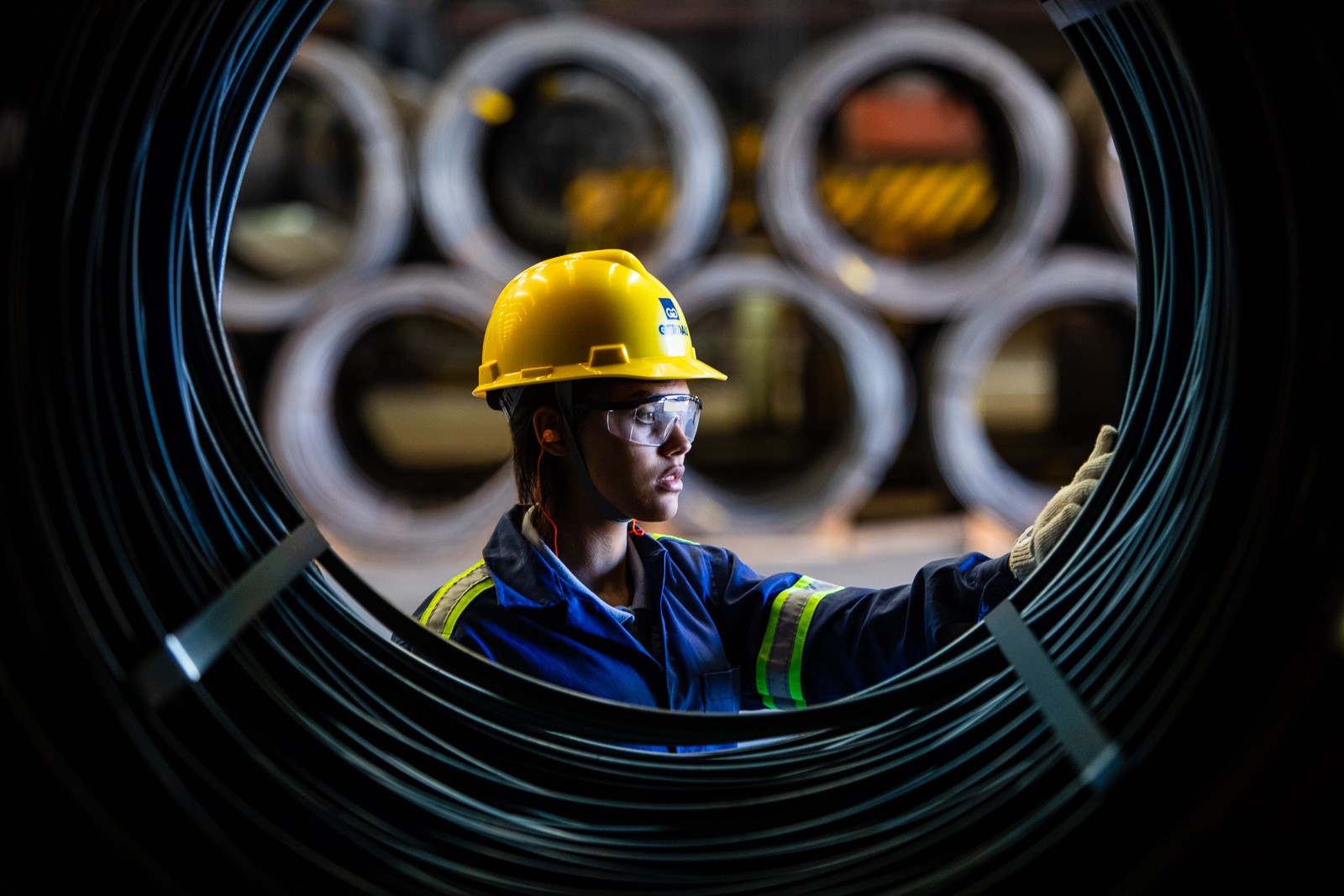
Hartlepool Steel Terminal receives shipments, eyes import/export boost
The Hartlepool Steel Terminal, owned and operated by PD Ports, has welcomed its first shipments.
The 75,000 square feet facility allows customers to discharge different steel products – including coil, steel plate, beams, pipes – on to the same berth, reducing both shipping and onward freight costs, PD Ports tells Kallanish.
It has been upgraded to store steel coil with the installation of a specialist storage system – the KLP Roll Stop System by Lankhorst Engineered Products – which can hold individual coils of up to 30 tonnes.
The Port of Hartlepool is the only northeast UK coastal port that can receive both short-sea and deep-sea volumes of steel coil, offering capacity for more than 50,000t of the product, PD Ports claims. Shipments of various steel products, including the first shipments of steel coil, will arrive in Hartlepool this month, including vessels from Brazil, Turkey and Germany.
The port has already handled 50,000t of import and export steel products in the first six months of 2023, a figure which is expected to grow significantly thanks to the new steel coil offer. The project represents a diversification for the terminal building, which previously supported the oil and gas industries.
“This new facility is a significant investment in our operations at Port of Hartlepool, making it a truly global terminal and one that will support North-East manufacturing businesses in sourcing their products from around the world,” says PD Ports business development manager Roy Merryweather. “It will open up access to the best quality steel available internationally, including many grades that are not made in the UK.”
Adam Smith Poland


Acciaierie d’Italia to idle blast furnace
Italian steelmaker Acciaierie d’Italia (ADI) is idling blast furnace no.1 for the entire month of August. The company is installing so-called Meros filters at the agglomeration equipment, completing the work required to achieve national environmental authorisation Autorizzazione Integrata Ambientale (AIA), a source close to the company tells Kallanish.
BF no.1 will resume operation in September after the filters have been fully installed and are in operation. Acciaierie d’Italia employs over 10,000 workers and is currently operating with BFs No.2 and 4. In the second half of 2023, it has vowed to start the refurbishment of blast furnace no.5, which has been idle for several years, and begin construction of an electric arc furnace.
The group produced 3.5 million tonnes of crude steel in 2022 and 3.3mt of pig iron, generating revenue of €3.9 billion ($4.3 billion) and a positive Ebitda of €327 million. In 2021, it posted turnover of €3.3 billion, up from €1.6 billion in 2020, while crude steel production was 4.1mt, an increase from 3.4mt in 2020.
Natalia Capra France

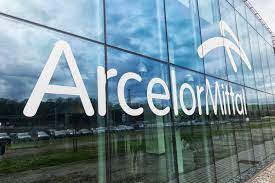
ArcelorMittal confirms hybrid EAF investment in Spain
ArcelorMittal has officially announced its decision to give a green light for its decarbonisation plan in Spain, Kallanish learns from the company.
The company’s project includes the construction of a 2.3 million tonnes/year green hydrogen-based direct reduced iron unit, complemented by a 1.1m t/y hybrid EAF, which will substitute the current blast furnace.
“We began the initial engineering and design (FEED) phase of the DRI/EAF projects as we prepare to close the agreements on the commitments with the equipment manufacturers to establish the supply schedule, after having completed all the preliminary evaluation stages,” says ArcelorMittal.
The EAF is expected to be operational in the second half of 2025. “Once started, the plant will be able to produce high volumes of low carbon steel wire rod and rail, which will place the Spanish unit in a highly competitive, particularly for high value-added products market.”
The project is expected to cut almost 70.9 million tonnes of CO2 emissions, the steelmaker adds.
The investment is €1 billion ($1.1 billion), including a €450m contribution from the Spanish government. The co-funding is part of the national recovery and resilience plan approved by the European Commission.
Todor Kirkov Bulgaria

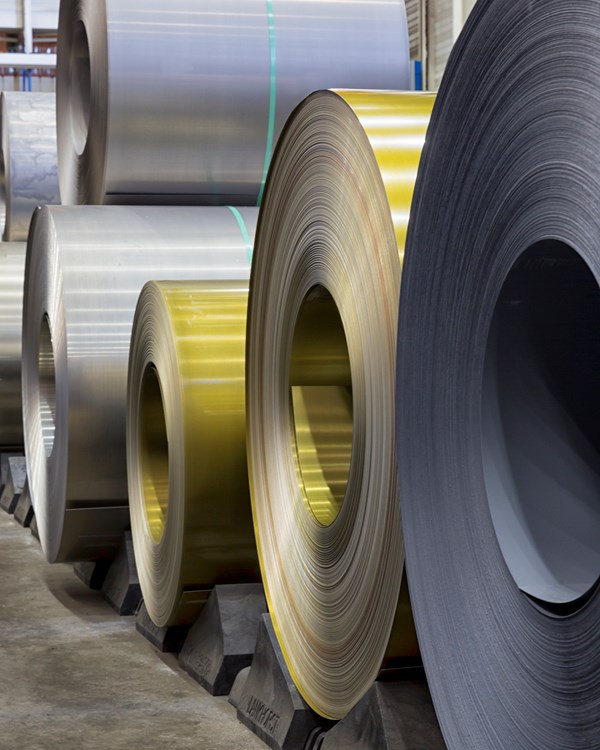
EU HRC prices stabilize in slow market
Domestic prices for hot-rolled coil in Europe have been stable on July 31 as the market entered a traditional slow period.
Sentiment in the market has remained largely downward due to low demand from the construction industry and a negative outlook for steel consumption by carmakers.
“Demand remains the issue and it would not be solved by lower prices – the buyers would not buy more at any prices if they understand that their customers do not need material,” a European trader said.
Lower availability of imported coil combined with the effects of summer maintenances at European mills might partially offset the negative factors, sources said.
Safeguard quotas for Other Country and South Korea origin have been almost filled, making the cheapest material unattractive for the EU buyers due to risks related to safeguard duty.
Platts assessed domestic prices for hot-rolled coil in Northwest Europe unchanged on day at Eur645/mt ex-works Ruhr on July 31.
The assessment was based on tradable values estimated by market sources at Eur640-650/mt ex-works Ruhr.
Platts assessed domestic prices for hot-rolled coil in South Europe at Eur635/mt ex-works Italy on July 31, stable on day.
Tradable values have been reported at Eur630-650/mt ex-works Italy.
Platts is part of S&P Global Commodity Insights.
Author Maria Tanatar


European steel HRC market quiet amid summer closures
Fastmarkets’ daily steel HRC index, domestic, exw Northern Europe, was calculated at €654.92 ($721.34) per tonne on Monday, down by €1.08 per tonne from €656.00 per tonne on July 28.
The latest calculation of the Northern European index was down by €0.91 per tonne week on week and by €19.18 per tonne month on month.
Market participants were largely absent from trading, resulting in seasonally slow activity.
“[The market] is dead at the moment,” a trading source said.
Some sources forecast that there would be a pick-up in demand by September and said that mills could look to achieve price rises before the autumn.
During the week to July 28, one mill in Germany expected to achieve €700 per tonne ex-works for November-rolling HRC, according to market sources. It remained uncertain whether this price would be achieved.
Offer prices of HRC were in the range of €660-680 per tonne ex-works, while buyers’ estimates of tradeable prices were still being reported at €650-660 per tonne ex-works.
Meanwhile, Fastmarkets calculated its daily steel HRC index, domestic, exw Italy, at €635.00 per tonne on Monday, down by €9.58 per tonne from €644.58 per tonne on Friday.
The Italian index was down by €10 per tonne week on week and down by €15 per tonne month on month.
Trading in the Italian market was almost nonexistent, but this was typical during the summer-holiday period.
Buyers reported tradeable prices for September-October-delivery HRC at €630-640 per tonne ex-works on Monday.
“Market activity is completely dead,” the first trading source said, “especially in Italy because of the summer holidays.”
Published by: India-Inés Levy


Steel rebar, wire rod prices stable in Poland; mills hope for post-summer recovery
Rebar offers from three local producers were broadly stable week-on-week.
One mill was hoping to get 2,640 zloty ($660) per tonne ex-works. Another producer was quoting rebar for the local market at 2,660 zloty per tonne CPT, roughly equivalent to 2,630-2,640 zloty per tonne ex-works. A third producer was hoping to get 2,680 zloty per tonne CPT, about 2,650-2,660 zloty per tonne ex-works.
Rare transactions were reported within the range of 2,600-2,650 zloty per tonne ex-works during the week. Mills in the region were able to offer rebar from stock with quick shipment, market sources said.
“As usual during summer vacations, demand [for rebar] is rather weak, but mills are reluctant to cut prices to less than 2,600 zloty [per tonne ex-works],” a trading source said.
Fastmarkets’ weekly price assessment for steel reinforcing bar (rebar), domestic, exw Poland, was 2,600-2,650 zloty per tonne on Friday, stable week on week.
In the secondary market, rebar prices were reported at 2,750 zloty per tonne CPT, compared with 2,750-2,800 zloty per tonne CPT in the preceding week.
Current prices were expected to be maintained over the next 2-3 weeks amid the traditional summer trading lull. In September, however, market sources expected to see a rebound in demand from the construction industry.
“Everyone is hoping for better demand in September,” a second source said. “There are many projects waiting for building permits.” This was because the Polish government was offering subsidies to people purchasing their first apartments, so there was not enough housing stock on offer at the moment.
Wire rod
The wire rod market has also been quiet recently, with prices said to be stabilizing.
Official offers of low-carbon drawing-quality wire rod issued by local steelmakers were reported at 2,800-2,900 zloty per tonne CPT this week, although the upper end of that range was deemed unworkable by most buyers.
In fact, sources reported that one local mill was actually selling wire rod at lower prices of 2,750-2,760 zloty per tonne CPT.
One deal for a low tonnage was reported at 2,800 zloty per tonne CPT.
Fastmarkets’ weekly price assessment for steel wire rod (drawing quality), domestic, delivered Poland, was 2,750-2,800 zloty per tonne on Friday, unchanged since July 7.
Import wire rod offers to Poland were also seen as stable over the past seven days.
One Ukrainian supplier was offering mesh-quality wire rod from stock at €610-615 ($674-680) per tonne CPT depending on tonnage, sources said.
Transactions for small lots were heard within the range during the week to Friday.
Another Ukrainian supplier was offering mesh-quality wire rod at €570 per tonne DAP border, which would net back to about €595-600 per tonne CPT.
Both Ukrainian mills were said to have limited allocations for exports, with both citing improved demand for long steel in Ukraine and a priority on domestic sales.
Offers from an Italian mill were reported at €600-610 per tonne CPT for mesh-quality wire rod with August delivery.
And a mill in Moldova was offering drawing-quality wire rod at €620 per tonne CPT, also flat week-on-week.
Published by: Julia Bolotova


